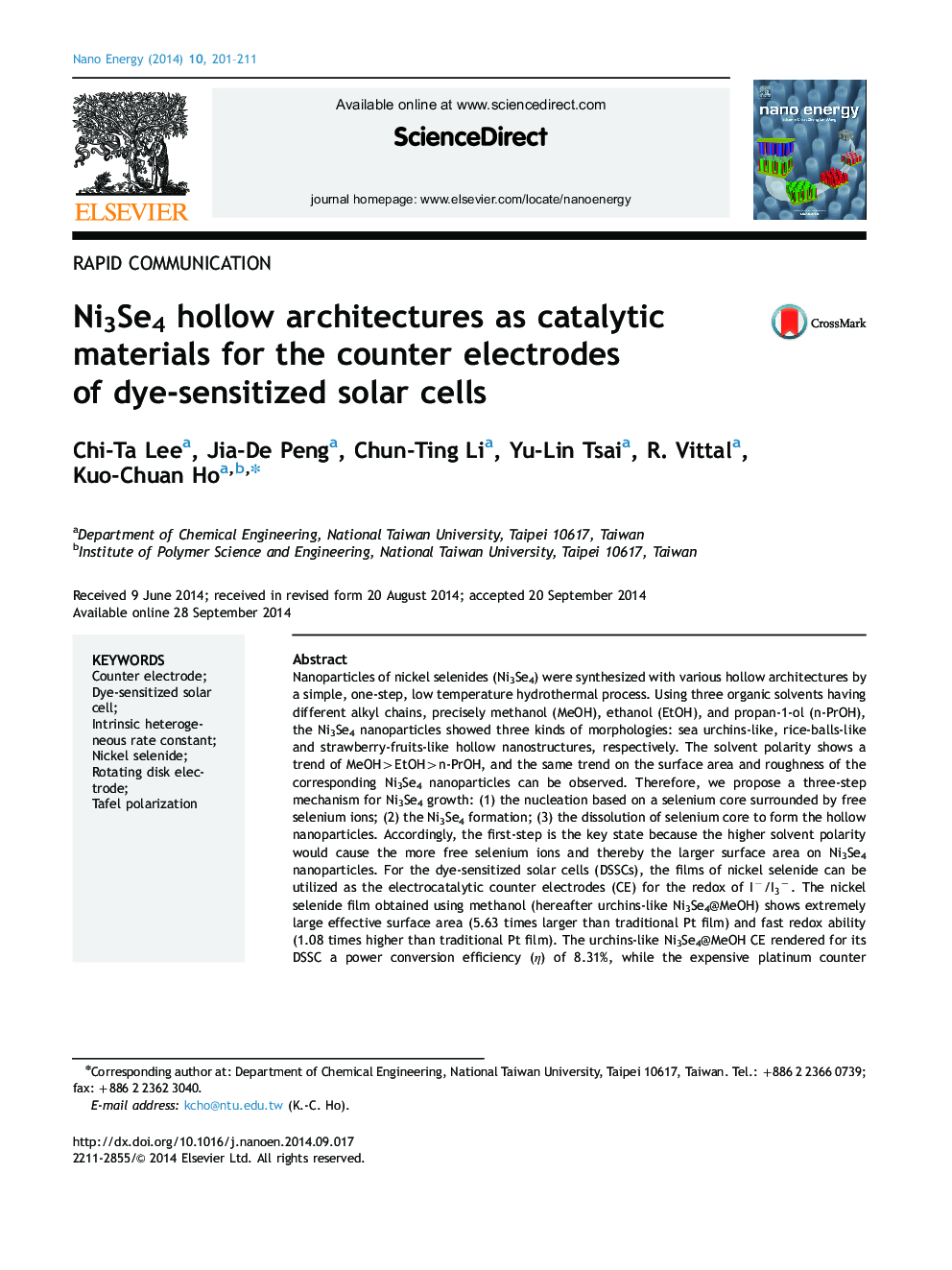| Article ID | Journal | Published Year | Pages | File Type |
|---|---|---|---|---|
| 1557498 | Nano Energy | 2014 | 11 Pages |
•Urchins, rice-balls and strawberry-like Ni3Se4 nanostructures were synthesized.•Polarity of solvents are responsible for the various morphologies of Ni3Se4.•Urchins-like Ni3Se4 shows large active surface area and great catalytic ability.•DSSC with urchins-like Ni3Se4 CE shows a high efficiency of 8.31% (8.03% for Pt).
Nanoparticles of nickel selenides (Ni3Se4) were synthesized with various hollow architectures by a simple, one-step, low temperature hydrothermal process. Using three organic solvents having different alkyl chains, precisely methanol (MeOH), ethanol (EtOH), and propan-1-ol (n-PrOH), the Ni3Se4 nanoparticles showed three kinds of morphologies: sea urchins-like, rice-balls-like and strawberry-fruits-like hollow nanostructures, respectively. The solvent polarity shows a trend of MeOH>EtOH>n-PrOH, and the same trend on the surface area and roughness of the corresponding Ni3Se4 nanoparticles can be observed. Therefore, we propose a three-step mechanism for Ni3Se4 growth: (1) the nucleation based on a selenium core surrounded by free selenium ions; (2) the Ni3Se4 formation; (3) the dissolution of selenium core to form the hollow nanoparticles. Accordingly, the first-step is the key state because the higher solvent polarity would cause the more free selenium ions and thereby the larger surface area on Ni3Se4 nanoparticles. For the dye-sensitized solar cells (DSSCs), the films of nickel selenide can be utilized as the electrocatalytic counter electrodes (CE) for the redox of I−/I3−I3−. The nickel selenide film obtained using methanol (hereafter urchins-like Ni3Se4@MeOH) shows extremely large effective surface area (5.63 times larger than traditional Pt film) and fast redox ability (1.08 times higher than traditional Pt film). The urchins-like Ni3Se4@MeOH CE rendered for its DSSC a power conversion efficiency (η) of 8.31%, while the expensive platinum counter electrode (Pt-CE) could bestow for its DSSC only an η of 8.03%. It may be said that nickel selenide is a promising catalytic material to replace the expensive platinum in a DSSC.
Graphical abstractFigure optionsDownload full-size imageDownload as PowerPoint slide
